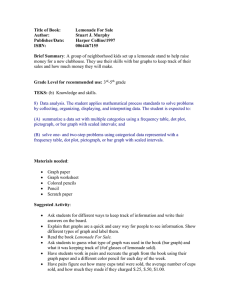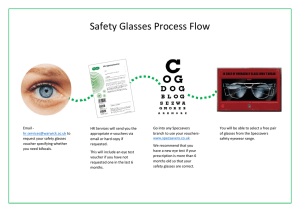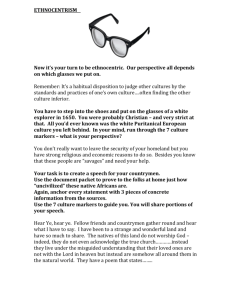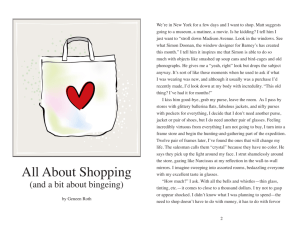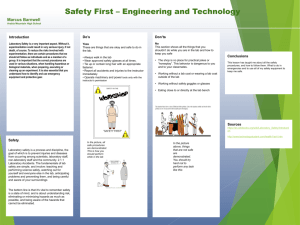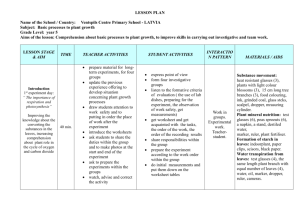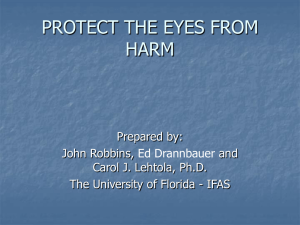The Three Color Mystery: Collecting the Clues
advertisement
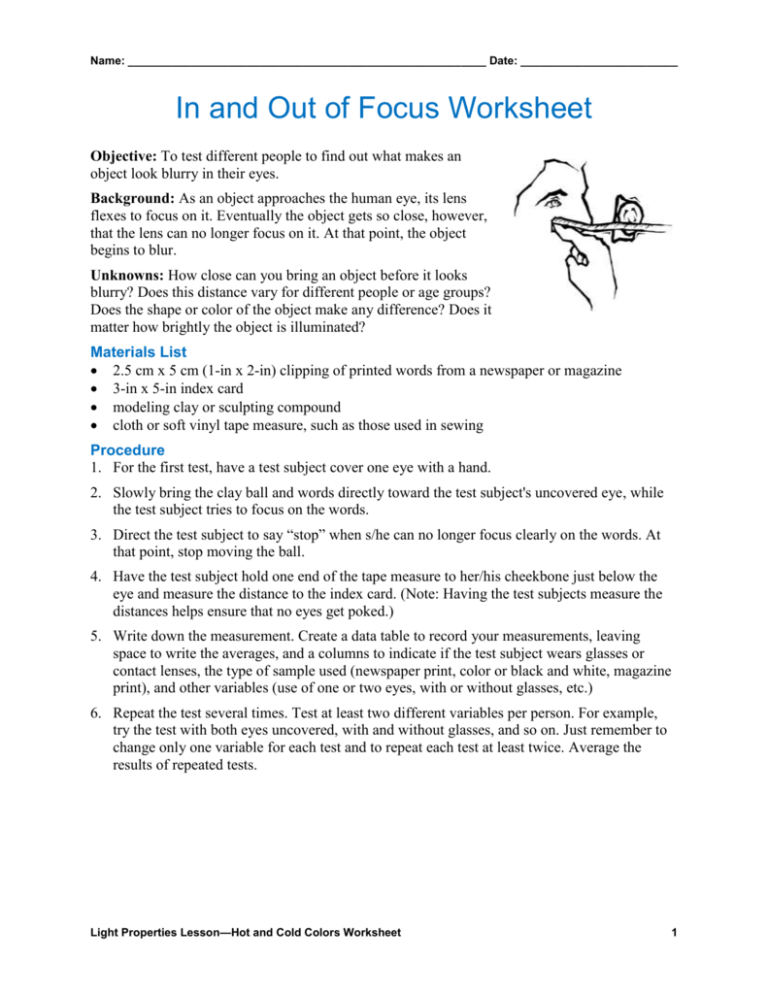
Name: _________________________________________________________ Date: _________________________ In and Out of Focus Worksheet Objective: To test different people to find out what makes an object look blurry in their eyes. Background: As an object approaches the human eye, its lens flexes to focus on it. Eventually the object gets so close, however, that the lens can no longer focus on it. At that point, the object begins to blur. Unknowns: How close can you bring an object before it looks blurry? Does this distance vary for different people or age groups? Does the shape or color of the object make any difference? Does it matter how brightly the object is illuminated? Materials List 2.5 cm x 5 cm (1-in x 2-in) clipping of printed words from a newspaper or magazine 3-in x 5-in index card modeling clay or sculpting compound cloth or soft vinyl tape measure, such as those used in sewing Procedure 1. For the first test, have a test subject cover one eye with a hand. 2. Slowly bring the clay ball and words directly toward the test subject's uncovered eye, while the test subject tries to focus on the words. 3. Direct the test subject to say “stop” when s/he can no longer focus clearly on the words. At that point, stop moving the ball. 4. Have the test subject hold one end of the tape measure to her/his cheekbone just below the eye and measure the distance to the index card. (Note: Having the test subjects measure the distances helps ensure that no eyes get poked.) 5. Write down the measurement. Create a data table to record your measurements, leaving space to write the averages, and a columns to indicate if the test subject wears glasses or contact lenses, the type of sample used (newspaper print, color or black and white, magazine print), and other variables (use of one or two eyes, with or without glasses, etc.) 6. Repeat the test several times. Test at least two different variables per person. For example, try the test with both eyes uncovered, with and without glasses, and so on. Just remember to change only one variable for each test and to repeat each test at least twice. Average the results of repeated tests. Light Properties Lesson—Hot and Cold Colors Worksheet 1 Name: _________________________________________________________ Date: _________________________ Questions 1. What is the average distance where the image begins to blur for all test subjects? 2. Is the average distance larger or smaller for people who wear glasses? 3. Is it larger or smaller for one eye or both eyes? 4. Is the distance the same for both eyes of the same person? 5. Describe how you would design another experiment that tests to find the width of a person's field of vision. Light Properties Lesson—Hot and Cold Colors Worksheet 2



